Differences Between Various Image File Formats
People like photographers, photo editors, 3D modelers, etc., who work with images are very concerned about one particular thing. That is the “image file format”. It is very important for them to choose the correct image file format based on the type of work they do. Otherwise, it will lead to bad-quality image output like poor-quality print, web images, etc.
Now let us have a look into what this image formats actually is.
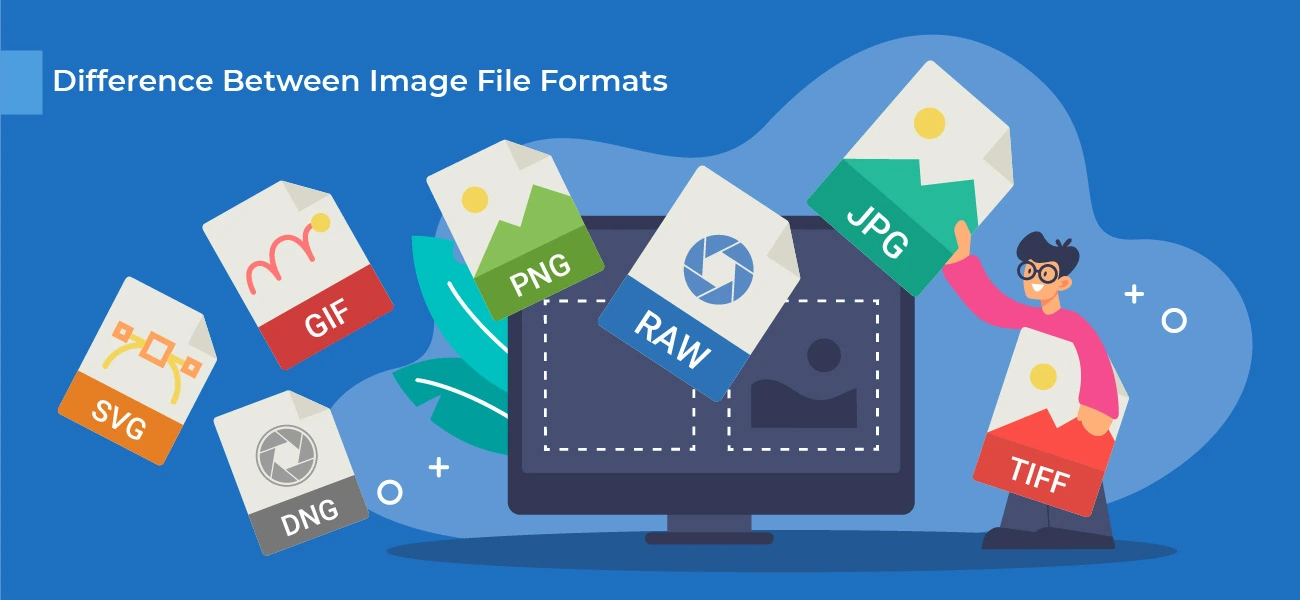
What are image file formats?
Image file formats are standard ways of encoding digital image files in a computer or any other device memory. It indicates if the data is going to be stored compressed, uncompressed, or raw. A software must recognize the image file type through these file formats to access the data stored in it.
Image file extensions tell about the type of file format in which the data is encoded. Like the”.png“ (dot p n g) extension behind any file name then, it means the data in the file is stored in PNG (Portable Network Graphic) format.
Note: Different image file formats support different image types.
Vector vs Raster image files
The digital image files are of two different types- Vector and Raster. The digital file formats are chosen based on the image type so as to get the required image output.
Raster image files use pixels to form images and are also called Raster images. These pixels determine the degree of detail the raster file will hold. If the size of a raster file is altered, the image will lose its quality and look blurry.
Raster image files can store a lot of information (more pixels, more detailed) and so require large storage spaces. These image files are supported by raster file formats.
On the other hand, vector image files use mathematical expressions to form images. Because of these fixed equations, the images can be re-scaled to any size without affecting their quality.
Vector image files occupy much less space and are easy to work with. They are perfectly fit for the web and are supported by vector file formats.
Note : Multiple image file types exist because websites choose them accordingly, as some save bandwidth while some save space.
Now let us come to the differences between some of the most common image file formats that are in use today.
But before that, we must know what lossless and lossy file formats are. A lossless file format compresses the file by retaining the original data and hence the quality but requires more space. While lossy file formats compress the data by compromising the original information and hence the quality but save more space.
-
PNG
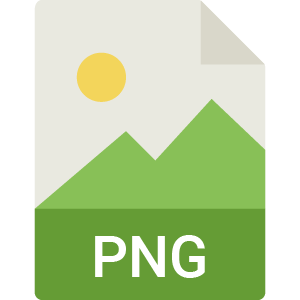
Expanded form: Portable Network Graphic
Extension name: .png
File type: Raster
PNG files are images with a small amount of text and graphics like logos, charts, etc. It’s a lossless file format and retains the image's original quality even after compression. PNG files are much preferred for graphic designs but very less preferred for web purposes due to their large size and long loading time.
-
JPEG
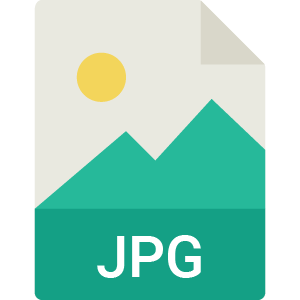
Expanded form: Joint Photographic Experts Group
Extension name: .jpeg
File type: Raster
JPEG is the most widely used image file format for the web. Its wholesome color palette of around 16 million and highly compressible size makes it a perfect fit for most browsers. It's also famous for storing a good number of digital camera images in a small space. But despite these, JPEG file formats being lossy in nature compromise the original data and lower the quality of the image.
PNG vs JPEG
Although both use pixels to form images, PNG is a lossless file format, so it retains the original data in the image, supports transparent backgrounds, and is better than JPEG in terms of quality. JPEG is a lossy file format but is widely preferred for web purposes to PNG as it occupies less space and takes very less time to load.
-
RAW
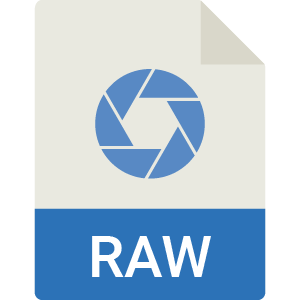
Expanded form: Spelled as R-A-W only
Extension name: .RAW (extensions vary from one lens manufacturing company to another)
File type: Raster
RAW or raw data image refers to images captured through the camera and other similar devices. These data files are completely raw, i.e., uncompressed, highly detailed, and are purely lossless when compressed. RAW files can be edited as per choice without affecting the original data. These files are very large and need to be imported to designated software to work on them.
RAW vs JPEG
RAW images are always larger in size than JPEGs, with RAW offering premium quality images with intrinsic details. JPEG file formats, being lossy, might be the best preference for use over the web but offers a considerably lower picture quality than RAW files.
-
DNG
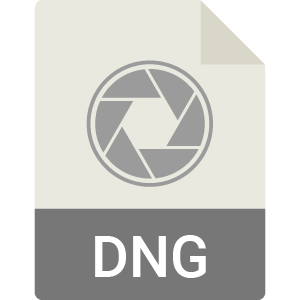
Expanded form: Digital Negative Image
Extension name: .dng & .DNG
File type: Raster
DNG is a type of RAW file format that also contains uncompressed and unedited image files. It is a lossless format, and converting the RAW files to DNG files reduces the size by a considerable percentage with almost negligible changes in the quality. It rather makes it easy to send them via email, upload, download, etc.
RAW vs DNG
RAW gives more quality images than DNG, but as RAW is not that flexible to use, photographers prefer shooting in RAW format and then converting it to DNG for editing and better flexibility. Where RAW file qualities differ for camera manufacturing companies, DNG is an open-source and highly compatible option for opening raw image data from any camera.
-
TIFF
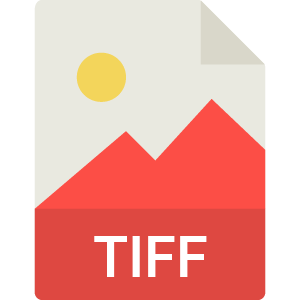
Expanded form: Tagged Image File Format
Extension name: .tif, .tiff
File type: Raster
TIFF is a lossless file format that stores images in high quality with a fine level of precision. The word “tagged” in the name signifies “tags”, which inform how the file is stored inside. TIFF files store graphic images and are among the best choices when image quality is a priority. However, the large size of these files makes them completely unsuitable for use over the web.
TIFF vs RAW
Unlike RAW files, TIFF files are much heavier and can be used as image containers. RAW files are purely unprocessed images that come directly from photographic devices. In comparison, TIFF is the format that is used to store the image after processing it.
TIFF vs PNG
PNG files occupy very less space compared to TIFF files. Although both offer lossless compression, TIFF files hold more data than PNG files and give good-quality prints. However, PNG files are better for web purposes and are always chosen over TIFF.
-
GIF
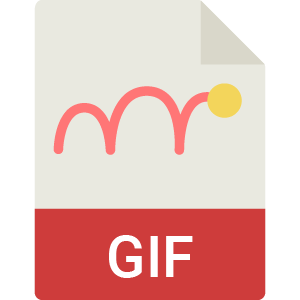
Expanded form: Graphics Interchange Format
Extension name: .gif
File type: Raster
GIF file formats support files of low resolution as their color palette is limited to only 256 colors. They were originally made to support small graphics and logos precisely and make them perform well on the internet. GIFS offer lossless data compression and are now used for small soundless animations lasting for a few seconds.
PNG vs GIF
Although both are lossless file formats, PNG is better than GIF in terms of the color palette, which is around 16 million, but it takes up more storage than GIF, even after compression. But unlike GIF, PNG cannot be used for animation. So in cases where animation is not a necessity, PNG is a better option, but its less space occupancy sometimes makes GIF preferable.
-
SVG
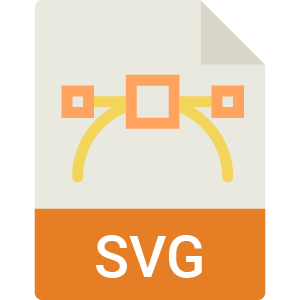
Expanded form: Scalable Vector Graphics
Extension name: .svg
File type: Vector
The name itself defines the nature of SVG files. SVG is a lossless file format, and being a vector file can be re-scaled to any size without compromising the quality of the image. SVG files are competent to store information in 2D, be it text in a picture, only text, or only picture. They offer quality outputs at any resolution being lightweight and web-friendly at the same time.
SVG vs JPEG
JPEG being a raster file, whereas SVG being a vector file is the first difference to be noted. Where JPEG is a lossy file format and loses data while compressing the file making the picture lose its quality overall, SVG is a lossless file format, offering high quality at any size. But JPEG is always a better choice than SVG when it comes to images with very high color content.
SVG vs PNG
Although both PNG and SVG offer lossless compression, the biggest difference between them is that PNG uses pixels to form an image, i.e., a raster file. In contrast, SVG uses mathematical equations for the same, i.e., vector file. SVG files are more web-friendly due to their smaller size, don’t affect the bandwidth compared to PNG, and take less time to open, save or work with.
Conclusion
Besides being a powerful way of storing memories, digital photographs can even help you hit the jackpot in business with some degree of editing. You can capture the image through any device, but choosing the right file format to store it and work with it is the real deal.
The correct file format for your image gives you the ground to work with your image the way you want or per requirements. So it is always better to be well-informed before choosing the required file format for any kind of photo editing services.
Know more about other file formats and get some more of your questions answered.
That’s it for this blog. Stay tuned!



